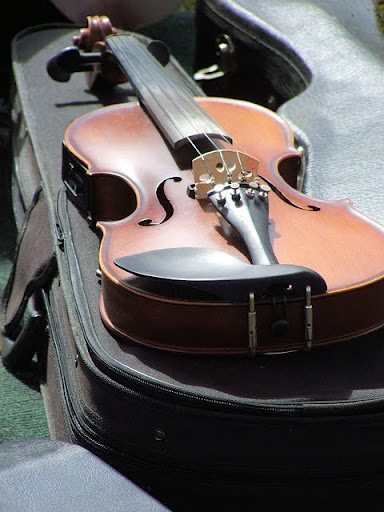Practicing in Real Life: Distractions, Doubts, and Breakthroughs

Have you ever picked up your violin (or any other instrument), started practicing, and realized—you’re just not feeling it?
It happened to me not long ago while I was preparing for upcoming Symphony New Brunswick rehearsals. I was trying to squeeze in some practice time while waiting for contractors to arrive and finish up work at my house. I felt rushed and distracted, with one ear on my music and the other listening for tires on the driveway.
As I tried to focus, I felt that familiar sinking sensation in my stomach, and my throat began to tighten. I knew—even if I forced myself to keep going—I wasn’t in the right headspace to make meaningful progress on the tricky passage I was working on.
Choosing to Pivot Instead of Powering Through
In moments like that, I’ll sometimes put down my instrument and take a break or switch to something completely different. But this time, I was working on a piece with complex rhythms that needed my full attention. So instead of walking away entirely, I decided to shift gears and work on something else—something a bit less demanding.
Sure enough, once the contractors arrived and the distraction was gone, I returned to the original piece. To my surprise, everything flowed more easily, and I made real progress.
Practicing with Awareness
That experience reminded me of something I talk about often: the importance of checking in with yourself during practice. Are you feeling tense, overwhelmed, or anxious? Are you distracted or just plain tired? Sometimes, pushing through isn’t the best option. Switching gears—or even taking a full break—can make all the difference.
But Don’t Quit Before You Start
That said, I do always encourage starting your practice session before deciding to walk away. There have been plenty of days when I didn’t feel like practicing, but once I got into it, the simple act of playing helped me tune out everything else. It became not just productive, but therapeutic.
Finding the Balance
I’m a big believer in building a solid, consistent practice routine—even when you don’t feel like it. But that routine should also include regular check-ins with yourself. If you’re not in a place to focus, it’s okay to take a step back. Sometimes the best thing you can do is pause, breathe, and try again later.
No one plays their best when their mind is elsewhere. Learning to recognize those moments—and responding with a little flexibility—can make your practice sessions not only more effective but also more enjoyable.
